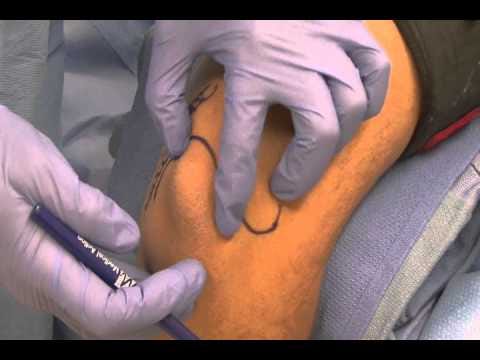Noah Syndergaard made his second rehab appearance, but only lasted an inning, showing decreased velocity and visible signs of discomfort on the mound. Syndergaard had an MRI and consulted with at least two surgeons, including Mets team ortho David Altchek, who performed his Tommy John surgery. According to multiple media reports, Syndergaard has “no structural damage,” but significant inflammation and will be shut down for six weeks.
A source tells me that there were two key findings in Syndergaard’s exam. The first is that he has developed a bone spur near the surgical attachment of his new ligament, but that the anchor and the tendon transplant look solid. The bone spur is unusual in that it developed during rehab, rather than prior to surgery.
Surgeons vary on the cause and treatment of these spurs. Some believe it is a reaction to the irritating and excessive forces that lead - or in this case led - to ligament damage. A spur is a bony growth that happens due to irritation. It’s not a perfect comparison, but thinking of them much like how blisters develop on the skin is a reasonable one. The problem is when these spurs get involved in articulation or irritate another structure during the function of the elbow.
They are very simple to remove, but again, there’s some controversy about whether there is any sort of protective function of this occurrence. The removal can be done arthroscopically and pitchers have returned from isolated bone spurs in a matter of weeks. This surgery, demonstrated in detail by Dr. Bill Stetson, is below. I’ve timestamped it to the section showing how the spurs can be removed, but the entire video is worth watching:
Syndergaard and his doctors have elected to not address anything surgically at this time, but will calm the inflammation with rest, treatment, and possibly medication. We won’t know how Syndergaard responds to this until he begins throwing at a high level again, so with the shutdown and a ramp-up, it could be well into an eight to twelve week period.
This is a significant setback for Syndergaard and may end his season. While surgery is not in the plan now, while minor, it would likely end his 2021 season. With free agency on the horizon, Syndergaard may have to take a “prove it” deal to show his elbow can once again hold up to a major league workload. It wouldn’t surprise me if this kind of deal would be with the Mets, where Syndergaard has a level of comfort with the medical team, led by Dr. Altchek.
***
Corey Kluber, just a week after his no-hitter, has been shut down indefinitely with a significant strain of his subscapularis muscle, one of the four muscles that makes up the rotator cuff. Kluber missed almost all of 2020 with a teres major strain, which is a similar and physically adjacent muscle. Both are involved in humeral rotation, but the teres major is not part of the rotator cuff; the teres minor, however, is, so some reports have made the easy error.
The strain - a Grade II that is near but not at the tendonous junction - is not considered surgical as yet. Surgery to repair any of the rotator cuff muscles is difficult and has a lower success rate than most, though techniques and tools have made it a bit better over the last decade. It is still an open surgery that gets deep and requires a lot of stitching and anchoring.
Yep, that’s much more involved and the hope is that Kluber can avoid that and have the muscle heal up naturally. Even if there’s some residual weakness, the rotator cuff is a redundant structure - think of it like having three working brakes on your car. It’s not ideal, but you can stop.
Given the location, function, and severity of this strain, plus Kluber’s significant history, it wouldn’t surprise me at all if this goes beyond the quoted eight week shutdown. Even factoring in a ramp up to return, it is not going to surprise me if Kluber ends up done for the ‘21 season at this stage.
Many are questioning whether the no-hitter is the cause of the injury. While it is known that stresses go up with the tension and excitement of an historical event, Kluber appeared free and easy, as well as efficient, needing only 101 pitches in that game. That was not an unusual pitch count for Kluber, having gone 101 and 103 in two previous starts. (Game log, per B-Ref.)
At 35 and on a one year deal, Kluber faces another long rehab and uncertainty on his future. At best, he’s likely to see a similar type of one-year deal as what he signed with the Yankees, where his long-time physical trainer Eric Cressey was an influence in signing. For now, the Yankees will hope that Kluber can return later this season and wait on Luis Severino to make his return from Tommy John surgery in the near future to take the rotation spot in the talented but thin and fragile rotation.




